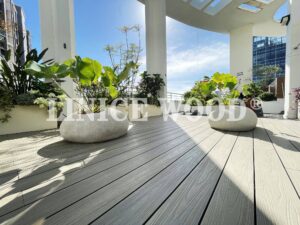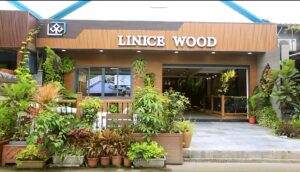If you’ve ever owned a wood deck, you know how much effort goes into keeping it in good shape. From water damage to pests, there’s always something that needs fixing. Composite decking, on the other hand, solves all these problems and gives you a much better, easier experience.
Let’s compare how composite decking outshines traditional wood decking in the most important ways.
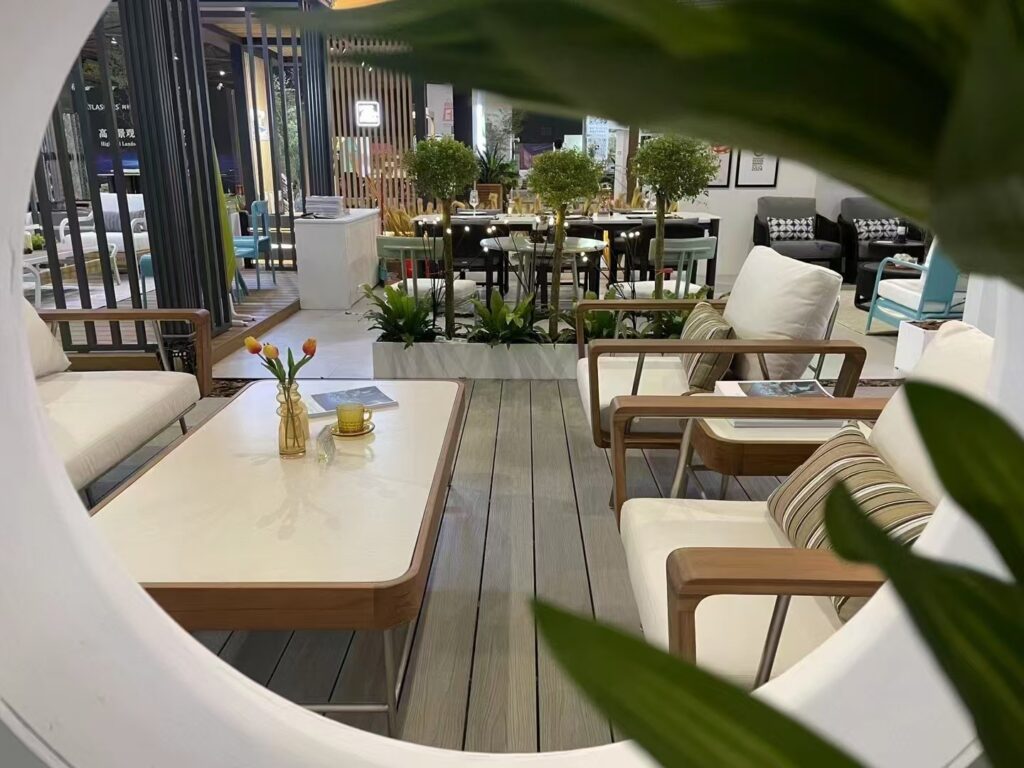
1. Water Absorption and Rot:
- Traditional Wood Decking: Imagine you accidentally spill a big glass of water on your wood deck or it rains heavily. If you don’t clean it up immediately, the wood will absorb the water. Over time, this causes the wood to warp and rot. You might even notice huge gaps between the boards as they swell and shrink with moisture. This is something you need to fix often, wasting time and money.
- Composite Decking: Composite decking doesn’t absorb water. Whether it’s a spilled drink or heavy rain, no swelling or warping happens. Even if you don’t clean up right away, composite will stay in shape—no rotting or warping.

2. Insect Damage:
- Traditional Wood Decking: After using your wood deck for just a few months, you might notice tiny bugs or dust around the boards. This is usually a sign of termites or other insects eating away at your deck. Over time, wood can become soft and crumbly due to insect damage, leaving it vulnerable and unsafe.
- Composite Decking: Composite decking is insect-resistant, meaning no termites, ants, or bugs will damage it. It stays strong and intact without needing any treatments for pests.
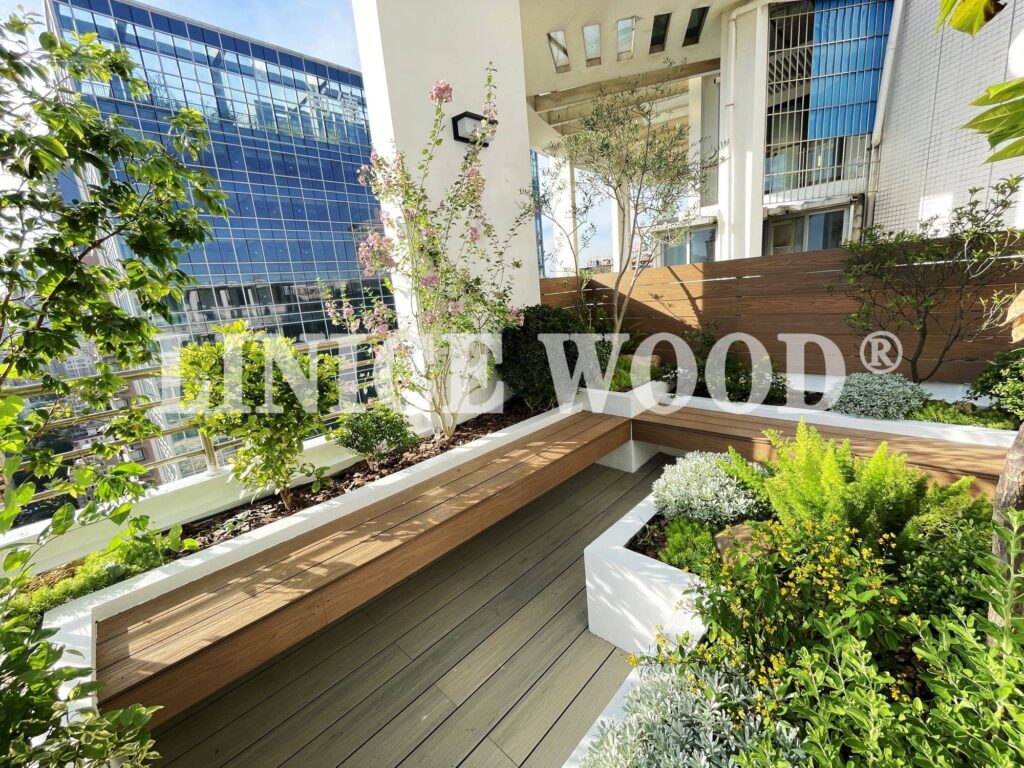
3. Frequent Maintenance:
- Traditional Wood Decking: Every year, you need to sand, stain, or paint your wood deck to keep it looking good. Otherwise, it starts to look faded, cracked, or splintered. This is time-consuming, and you’ll need to repeat the process year after year.
- Composite Decking: Composite decking requires little to no maintenance. No sanding, staining, or painting! Just wash it down with soap and water when needed, and it looks as good as new. No more spending your weekends on repairs!
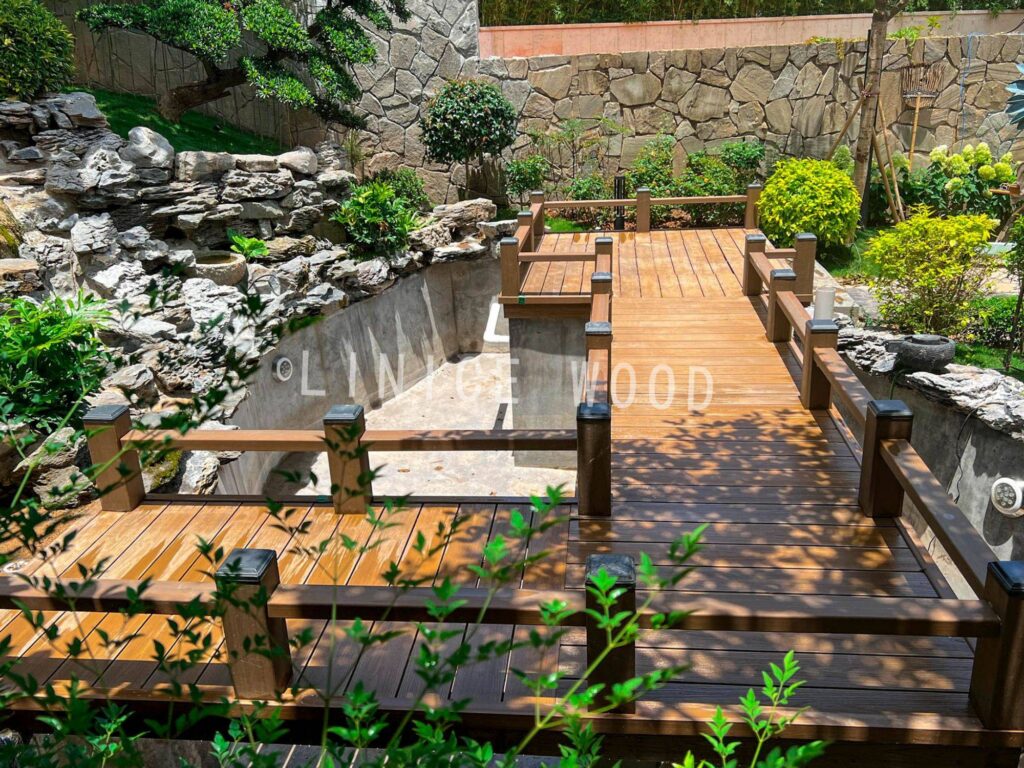
4. Color Fading:
- Traditional Wood Decking: Over time, wood decking gets damaged by the sun. Sun exposure causes the wood to fade, leaving you with a deck that looks patchy and uneven. Areas that are in the sun become lighter, while shaded parts stay darker. The difference can be huge, and you’ll need to re-stain it to fix the color mismatch.
- Composite Decking: Composite decking is designed to resist UV damage. It keeps its color and looks consistent all over your deck, no matter how much sun it gets. No fading, no patchiness—just a uniform color that lasts for years.
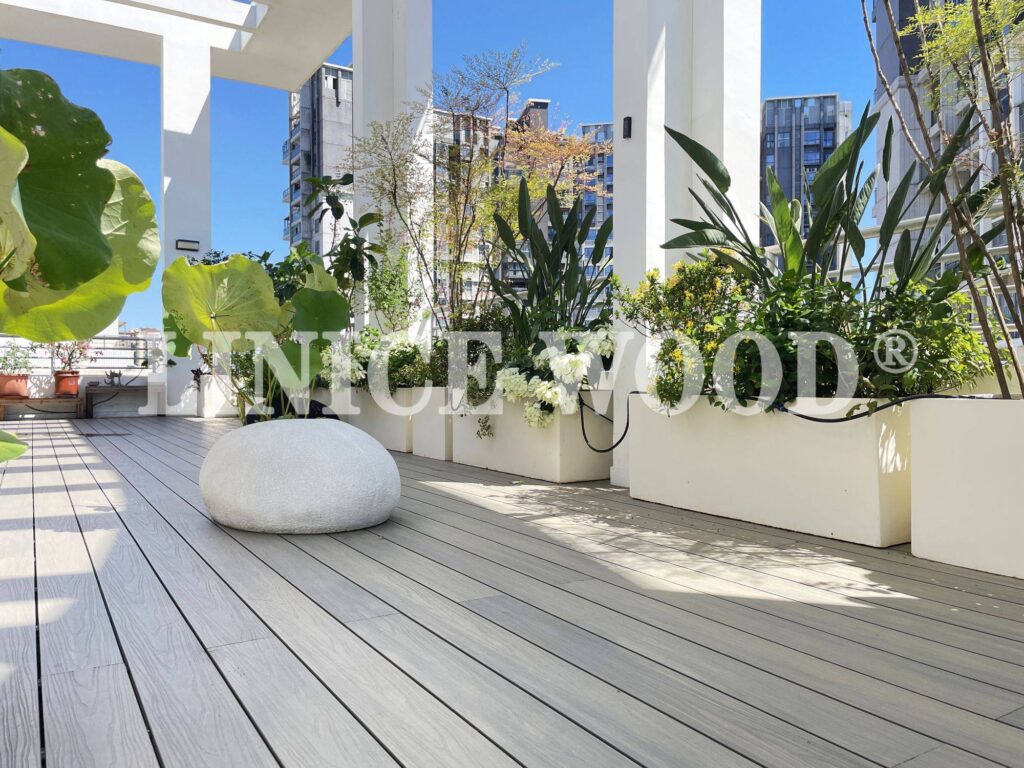
5. Lifespan:
- Traditional Wood Decking: Even with regular maintenance, wood decks don’t last as long. In just a few years, you might have to replace parts of the deck because of rot, pest damage, or weathering. The lifespan is short and repairs are frequent.
- Composite Decking: Composite decking can last 25 years or more. It’s designed to handle the weather, insects, and time, so you won’t need to worry about frequent repairs or replacements. It’s a long-term investment that pays off.

Key Differences:
| Feature | Traditional Wood Decking | Composite Decking |
|---|---|---|
| Water Absorption | Absorbs water, leading to rot and warping | Water-resistant; no swelling or warping |
| Insect Damage | Attracts termites and bugs; rots and decays | Insect-resistant; no pest damage |
| Maintenance | Requires frequent sanding, painting, and staining | Low maintenance; occasional washing only |
| Color Fading | Fades and discolors under the sun | UV-resistant; maintains color for years |
| Lifespan | Shorter lifespan; needs frequent repairs | Long-lasting; up to 25 years or more |
LiNice Wood – WPC Composite Decking Manufacturer in China

LiNice Wood are one of the leading composite decking manufacturers in China, specializing in producing high-quality, durable, and eco-friendly deck solutions.
If you want to buy composite decking for your commercial projects, pls feel free to contact us for more information or a custom quote!
Post Views: 127

